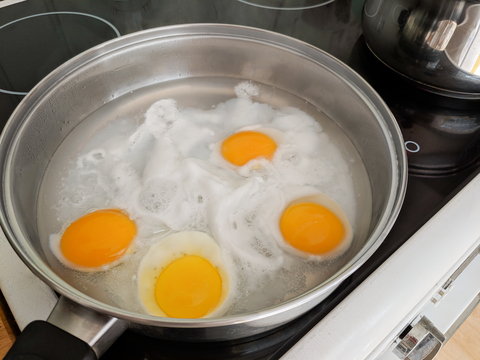Poaching eggs
This task is about how carefully you can observe what happens when an egg is poached.

What to do
Carefully watch the egg being poached.
Write down what you see happening. Think about:
- whether the colours change.
- how long the changes take to happen.
- whether the changes all happen at the same time.
- whether the egg is a solid or a liquid.
- whether the changes are temporary or permanent.

